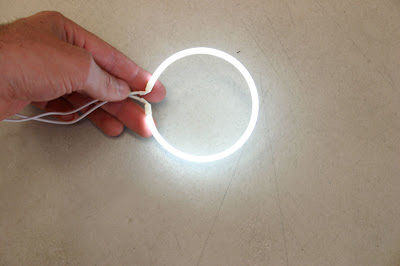Proton Gen2 Chassis Strengthening Facts!
Here's some info to share for you guys..
got it from ULTRA RACING websites...
Strut Bars and Chassis Strengthening Technology
If you're serious about your car's handling performance, you will first be looking at lowering the suspension. In most cases, unless you're a complete petrolhead, this will be more than adequate. However, if you are a keen driver, you will be able to get far better handling out of your car by fitting a couple of other accessories to it. The first thing you should look at is a strut brace. When you corner, the whole car's chassis is twisting slightly. In the front (and perhaps at the back, but not so often) the suspension pillars will be moving relative to each other because there's no direct physical link between them. They are connected via the car body, which can flex depending on its stiffness. A strut brace bolts across the top of the engine to the tops of the two suspension posts and makes that direct physical contact. The result is that the whole front suspension setup becomes a lot more rigid and there will be virtually no movement relative to each side. In effect, you're adding the fourth side to the open box created by the subframe and the two suspension pillars.
Is there a need to have our vehicle chassis strengthened?
The chassis of the car is the part which experiences the most of the abuse from the driver. It is particularly due to the weight transfer of the vehicle body during fast cornering, hard braking or hard acceleration. In some instances, the weight transfer during cornering may cause one side of the vehicle to experience as much as 3 times more force than the other side of the vehicle, causing enormous chassis flex/ vehicle body deformity and twist, consequently causing tires to lose grip. Deformity and twisting of the vehicle chassis during cornering may cause negative handling traits such as understeering and oversteering.
What is understeering and oversteering?
-
As most modern cars go, car manufacturers employ the FF (Front engine, Front wheel drive) setup for improving driver and passenger safety. The natural behavior of an FF car is to have a slight understeer, due to its heavier front end. Understeer happens when the front wheels lose their traction and won't turn any sharper, even when the steering is being corrected to turn the car more. This will cause the car to go wide instead of following the line. Understeer can be corrected by stiffening the rear end of the vehicle by adding a Rear Strut Bar and a Rear Anti Roll Bar.
-
Oversteer is when the rear tires lose grip and causing the rear end of the vehicle slides out of a corner. This phenomenon happens particularly to FR (Front engine, Rear wheel drive) or RR (Rear engine, Rear wheel drive) cars. Oversteer can be corrected by stiffening the front end of the vehicle by adding Front Strut Bars and Front Anti Roll Bars.
| UNDERSTEER : | OVERSTEER : | |
| | | |
|
|
What is Chassis Flex?
With a strengthened chassis, the vehicle will react better to tuning changes. The improvement is particularly obvious over a hard suspension setting. The chassis is also able to cope better after the engine upgrades and Braking System upgrades. A strengthened chassis, by Chassis Strengthening Technology, will also protect the vehicle platform to allow it to last longer under hostile conditions, especially for monocoque vehicle platform.
There are various types of strut bars, but they basically consist of :Front Strut Bars
Every vehicle’s front chassis is different; therefore designs and develops the front bars based on the actual conditions of the vehicle, repeatedly testing and proving to its perfection. High attention is taken during the design and development stage to ensure the chassis is able to withstand the load when a bar is being installed.
Ultra Racing is proud to bring to you the first of its kind in the country, the MULTI-POINT Front Strut Bar. The Front Strut Bar is installed to minimize the weight transfer of the vehicle body, therefore the vehicle will not loose traction easily during cornering.
FRONT FENDER BARS
As most of the vehicle’s front chassis over hanging is designated to carry the vertical loads from the front suspensions, it is vital that this part of the chassis is strong enough to take the bounce and rebound force of the suspension. Else, the effort of a good suspension will lose its meaning if the chassis absorbs all the forces from the suspension and not letting the suspension does what it suppose to do.
Therefore, these high quality 3-Point Fender Bars strengthen and reinforce these essential areas of your car and help maintain the suspension in position from all kind of vertical loads.
As a matter of fact, Fender Bars come as a standard feature on most of the high performance vehicles such as MITSUBISHI EVO and SUBARU WRX. Now, you can have the same feature on your car too!
Advantages of the fender bar:
- Improve handling, stability at high speed and cornering, hence safer driving.
- Provide a better braking and stopping performance.
- Reduce NVH (Noise, Vibration and Harshness).
- Increase stiffness of vehicle front chassis.
REAR STRUT BARS & REAR UPPER BARS
The Rear Strut Bar is particularly useful for an FF vehicle. The Understeer behavior can be corrected by stiffening the rear chassis by installing a Rear Bar.
High attention is taken during the design and development stage to ensure the rear chassis is reinforced and strengthened in a proper way that it will not cause the vehicle body to undergo too much stress.
Rear Upper Bars is designed for vehicles with high roof and high CG (Centre of Gravity) such as MPV's, mini MPV's, SUV's and Hatch Backs.
Initially, Rear Upper Bar is invented specially for the 5 Doors Hatch Back cars. The 5 Door Hatch Back cars have weaker rear upper body due to their wide opening rear door. Under extensive investigation and actual road proving, it corrected the shortcoming of the vehicle’s swaying rear upper body.
ANTI-ROLL BARS
Anti Roll Bars (also known as anti-sway bars, sway bars or lower tie bars) affect the handling of the car on the lower end of the suspension. Sway bars tie the lower suspension components together across the front or back, and affect a car's over steer and under steer. Sway bars will keep your car flat in turns instead of leaning over to one side. They distribute energy from the side of the car with all the force from the turn on it to the other side of the car, bringing the whole car down flat instead of leaning to one side. Of course the car will still lean some, but not as much. Sway bars provide better cornering especially at high speeds and work very well in conjunction with strut tower bars. However, they can have an adverse affect in off-road situations by leaving one tire completely off the ground.
LOWER ARM BARS
The Ultra Racing Lower Arm Bar is designed to reduce the flex of the vehicle chassis where it is connected by the Lower wishbone of the suspension system, thus to lessen the distortion of the vehicle lower suspension when it is under load, especially during hard cornering. It is installed at the lower mounting points between the left and right suspension and the vehicle chassis. Tremendously improving the stiffness at the area where the lower arm is connected to the vehicle chassis. The Ultra Racing Lower Arm Bar also keeps camber accurate during hard cornering.
It is the bar linking both the B-Pillars within the passenger compartment. The effect of room bar is particularly obvious for a four-door sedan. This is because four-door sedan has a longer body than the hatch-back or coupe, the chassis is by nature weaker than the later two.


Comments